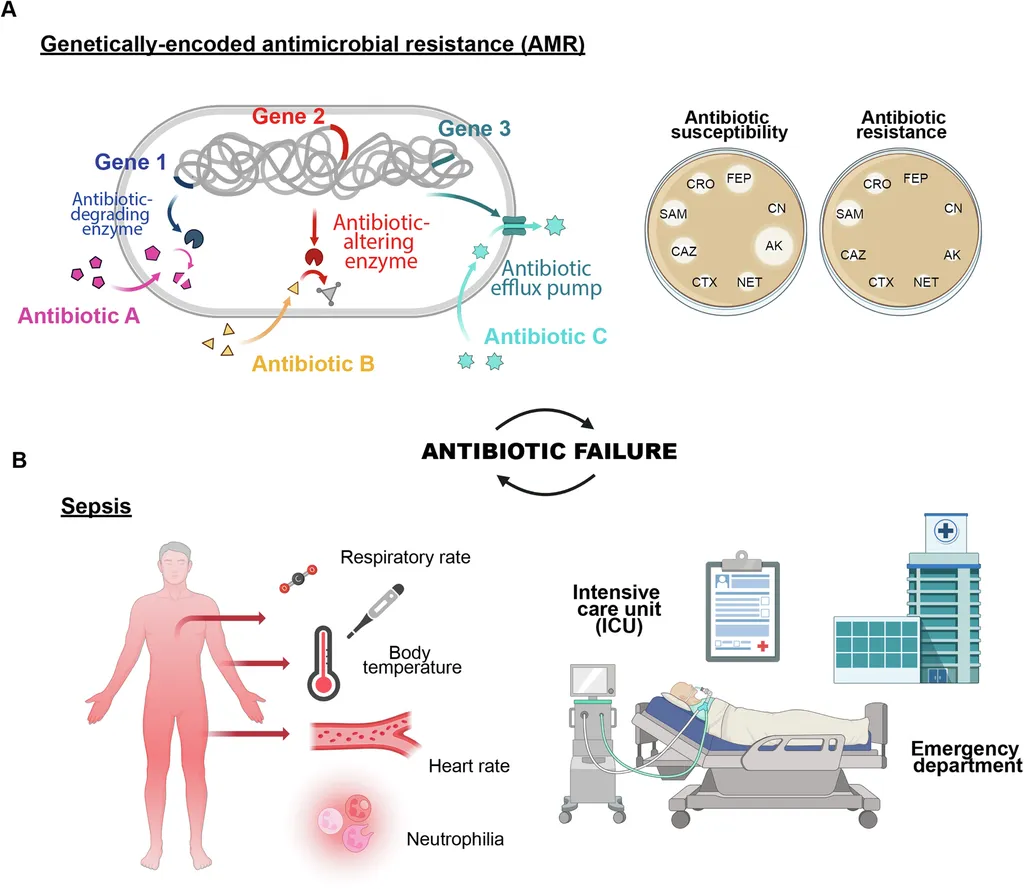In the relentless battle against infectious diseases, scientists are turning to cutting-edge technology to outsmart bacteria that have found refuge within our cells. A groundbreaking study, led by Yanpeng Fang from the Xiangya School of Pharmaceutical Sciences at Central South University in Changsha, China, has developed a novel computational framework that could revolutionize the way we tackle intracellular bacterial infections. This research, published in Bioactive Materials, which translates to English as ‘Active Substance Materials’, offers a promising new avenue for developing novel antimicrobial materials to combat these elusive pathogens.
Intracellular bacterial infections pose a significant challenge to current therapeutic strategies. Antibiotics often struggle to penetrate host cell membranes, leaving bacteria like MRSA (Methicillin-resistant Staphylococcus aureus) to thrive undisturbed. This is where Fang’s work comes in. His team has harnessed the power of artificial intelligence to screen and identify candidate peptides that can effectively target and eradicate these intracellular invaders.
The computational framework evaluates essential properties for the clinical application of candidate peptides, including antimicrobial activity, permeation efficiency, and biocompatibility. “Our strategy allows for a thorough assessment of sequences in the cell-penetrating peptides (CPPs) database,” Fang explains. “We combine multiple AI-based activity prediction models to quickly identify candidate peptides with the desired properties.”
But the innovation doesn’t stop at identification. The team constructed a CPP microscopic dynamics research system to explore the mechanism of action at the atomic level. This detailed understanding provides strong support for the discovery of promising candidate peptides, which are then validated through in vitro and in vivo experiments.
The results are impressive. From the CPPsite 2.0 database, the researchers rapidly identified a peptide named Crot-1. In tests, Crot-1 effectively eradicated intracellular MRSA, demonstrating significantly greater efficacy than vancomycin, a commonly used antibiotic. Moreover, it exhibited no apparent cytotoxicity to host cells, highlighting its potential for clinical application.
So, what does this mean for the future of antimicrobial development? The implications are vast. This computational approach could drastically reduce the time and resources required to develop new antimicrobial materials. For the energy sector, where bacterial infections can cause significant downtime and maintenance costs, this could mean more efficient operations and reduced environmental impact.
Fang’s work is a testament to the power of interdisciplinary research. By combining computational biology, molecular dynamics, and antimicrobial research, his team has opened up new possibilities in the fight against infectious diseases. As we continue to face the challenge of antibiotic resistance, innovations like this offer a beacon of hope.
The energy sector, in particular, stands to benefit from these advancements. Bacterial infections can wreak havoc on infrastructure, leading to costly repairs and downtime. With more effective antimicrobial materials, companies could maintain their operations more efficiently, reducing both financial and environmental costs.
As we look to the future, it’s clear that computational approaches will play a pivotal role in antimicrobial development. This research not only paves the way for new treatments but also sets a precedent for how we approach complex biological challenges. With continued investment and innovation, we can expect to see more breakthroughs in this exciting field.

